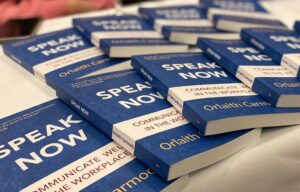A pitch often starts with an email to an investor or manager hoping for support for a project, product or service. Unfortunately on far too many occasions it is written so badly it ends in the virtual trash can.
I don’t think it is an exaggeration to say that 90 per cent of them start like this:
‘My name is John and I do such and such… I attended college in… degree in … passionately interested in entrepreneurship… My product is going to change the world… I plan to take it here, there and everywhere… Can we meet for a coffee so I can tell you how you can help me?’
One or two paragraphs in, the recipient finds themselves thinking, ‘And the point is?’ or, ‘What on earth has this got to do with me?’
No one, least of all a busy investor or mentor, has the time to wade through your CV and your five year plan to find out what you want and how it is relevant to him or her. You have to frontload the relevance and the request.
How about first pointing out what is in it for them? And why this idea will fit well with their other interests and bring a good return?
Your personal details can be added later as background information. If the idea is a good one that instantly appeals, and it is obviously a fit, the investor may then read on down to find out about the person behind it.
So the email might go something like this instead:
‘Hello Michael. I hope you don’t mind a direct approach, but I want to tell you about the Wonder Widget because it fits really well with your other products and has the potential to bring you a good return. It is at a very interesting stage of development and you might like to hear about it before anyone else, and to consider taking some equity and entering a distribution arrangement when it goes into production later this month. The margins are exciting and as far as we know, there are no competing products on the market, which will suit your policy of exclusivity. Here is a short outline of the development of the product and the experience of the promoters:’
This letter is all about Michael, the potential investor, not about the promoter. The ‘ask’ is very clear and upfront. It is business-like and to the point with no faffing about.
The aim of a paper pitch is first and foremost that it gets read. The 90 per cent I mentioned above rarely do. And you just know that the promoters are back there at the desk, fuming away at the rudeness of the recipient in not replying, when they should be blaming themselves for approaching it incorrectly in the first place.
From Speak Now, Communicate Well in the Workplace
Order your copy here

